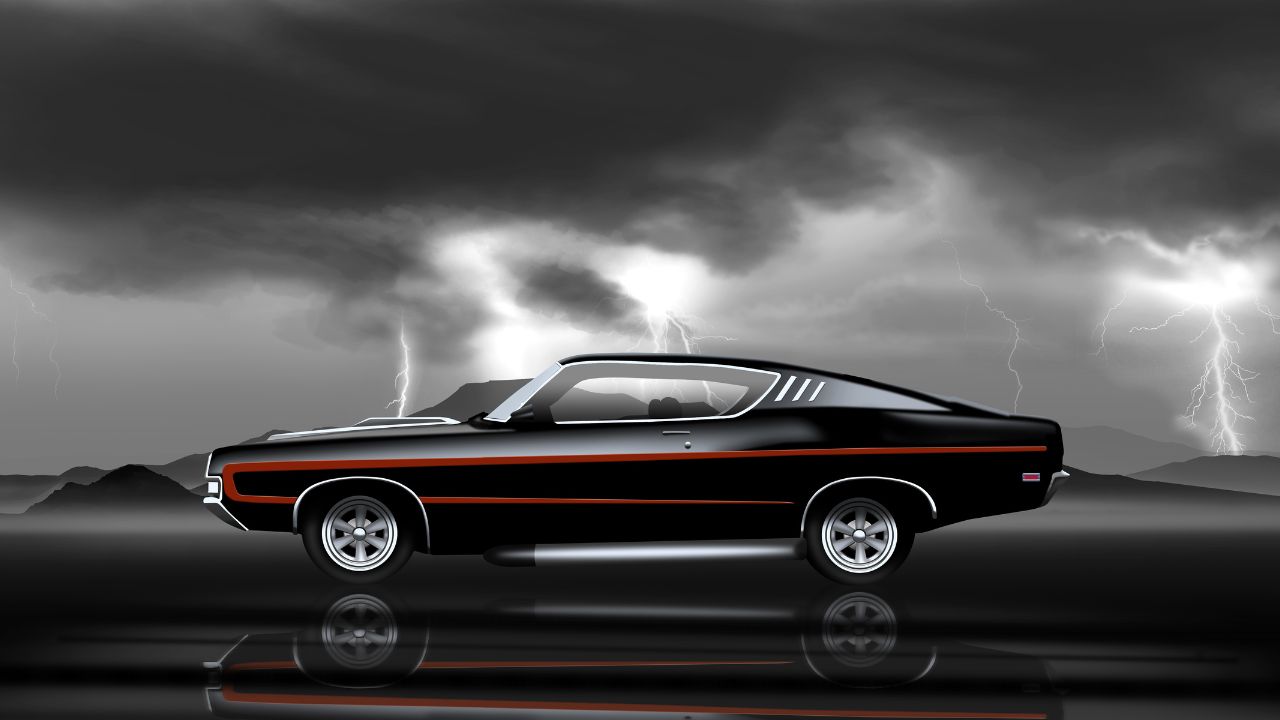
The 1969 Dodge 440 joined the Super Bee line-up in Six-Pack trim with 390 horsepower. In 1970, styling changed to a bumble bee wing grille that resembled spinster spectacle frames. Super Bee sales fell about half by 1970, but Chargers remained very popular with muscle car enthusiasts. The Super Bee wasn't the best-selling car. However, there were still some good years ahead.
2008 Dodge Charger SRT8
In addition to being fast, the Dodge Charger SRT8 superbee features a low-grade interior. While the seats are wide and supportive, the seat isn't exactly retro. It has a steering wheel that looks a lot like a decapitated turtle. This isn't a car for people who are looking for a new luxury vehicle, but it's still fun to drive.
Limited-edition trim for the 2007 Dodge Charger SRT8 Super Bee was made available in three colors. The classic Super Bee decals were found on the hood, fenders and bumpers. Blue accent stitching was added to the interior. This model was limited in production to just 425 units and is highly collectible. If you are looking to buy a rare car, the Dodge Charger SRT8 superbee is the one for you.

1968 to 1970 Dodge Super Bee
If you're looking for a muscle car, the 1968 to 1970 Dodge Super Bee could be just the thing for you. Based on the Coronet coupe this muscle car was priced and performs as well as the Plymouth Road Runner. The 1968 Super Bee weighed 65 more than the Road Runner and had a wider wheelbase and wider rear wheels. The car also had a bumblebee tail stripe, a fancier grille, and a prominent "Bee" badge.
The 1969 and 1970 Super Bees were given a major overhaul with looping chrome bumpers, dual hood scoops, and dual hood scoops. It had new taillamps and a "power bulge” roof. These cars came in coupes and hardtops. The Hemi engine was a favorite for its power. No matter what speed you prefer, the 1968-1970 Dodge Super Bee will meet your requirements.
1969-1970 Dodge Super Bee
The 1969 to 1970 Dodge Super Bee was an entry level muscle car that debuted in the late 1960s. It replaced the Plymouth Road Runner as a low-priced muscle car. In its original production, the Super Bee came with three different engines. They were all V8s. The 1969 Super Bee featured a new grille and headlight design, but was otherwise the same as the 1968 model. Halfway through the year, a new engine came on board. This new engine, the 440 cu-in Six-Pack, gave it 390 horsepower and cost less than the 426 cubic-inch Hemi.
The A12 package included features such as an aluminum intake manifold, heavy-duty radiator and a scooped roof. It also had upgraded handling, suspension and other features. It had a 440 cubic inch V8 and three Holley two barrel carburetors. The compression ratio was 10:1. The engine was capable of producing 390 horsepower with 490 pound-feet. It was popularly paired with a three speed automatic transmission.

1968-1970 Dodge Coronet
The Coronet debuted in 1949 as one of the first post-war models from Dodge, but soon turned into a muscle car. The 1968 Coronet was given a revamp that gave it a more round look and updated styling. There were many body styles and options for the Coronet, including a wide range of engine options. Many Coronet R/T buyers chose the Coronet R/T, which was undoubtedly the most popular Coronet model.
The 1969 Super Bee looked much like the previous generation, with a few minor changes, including a new grille and restyled headlights. Midway through 1969, the car received a new engine. The car was powered by a Hemi engine with 390 horsepower, which cost significantly less than the previous models. This engine enabled the Super Bee to compete against more expensive models such as the four-door Plymouth with a Hemi engine.
FAQ
What is the average time it takes to become a mechanic?
You need to have years of experience and practice before you can become a master mechanic. The best way to learn how to repair cars is by working under the supervision of a professional mechanic.
You will have to spend time in a garage learning about cars and mechanics. It is important to get familiar with the mechanics of cars and engineering.
You will also need to go to auto school.
The most important thing is to start early. Don't wait until you're older to begin studying automotive technology. Do you want to be a mechanic? Get started today!
To be a car mechanic, do you need a degree? Do I have to study part-time?
A degree isn't necessary, but it certainly helps. Employers prefer applicants who have completed a full-time degree. It shows that you've worked hard and are determined to succeed.
But, this doesn't mean you have to stop working while studying. Many universities permit students to take courses during the summer holidays, and then finish their studies in the fall. Others let students take classes part-time throughout the year.
What qualifications are required to become a truck mechanic
This job requires you to be a skilled mechanic, although you do not need any formal training. You are a valuable asset as you can quickly diagnose and solve problems efficiently.
You also have an excellent knowledge of diesel technology which will help you to understand what parts are needed to repair our vehicles.
What length is an automotive course?
A course in automotive lasts three years.
The first year of your training is devoted to theory. You will learn all about cars. The second year is dedicated towards practical training. This includes learning how to drive, fix engine problems, and doing other maintenance jobs around your car. The final year is spent doing a placement at a local garage, which gives you experience in fixing real-world problems.
Statistics
- There were 749,900 jobs available for automotive service technicians and mechanics in 2016, which is expected to grow by six percent through 2026. (jobhero.com)
- The U.S. Bureau of Labor Statistics (BLS) reports that the job outlook for automotive service technicians and mechanics is expected to decline by 4% from 2019 to 2029. (indeed.com)
- According to the BLS, total auto technician employment is expected to exceed 705,000 by 2030. (uti.edu)
External Links
How To
How to properly diagnose your vehicle for repair
To determine if your car needs repairs, you should first look at the symptoms that your car presents. These steps will help you diagnose your car properly.
-
Check engine lights. Check the dashboard light indicators such as the engine light indicator, the oil pressure gauge, the battery light indicator, the coolant temperature gauge, and the RPM gauge. You may have a problem with your vehicle if any of the indicators are flashing for more than a few days.
-
Check the treads of your tires. Tires that are worn can cause issues with handling and braking. It is also important to inspect the wheel treads. They should be clean and smooth. The best way to do this is to remove the wheels and take them off. Use a flashlight to see how well the treads are worn.
-
Observe the brake fluid level. Keep track of the brake fluid level in your vehicle. This ensures that your brakes work properly. Low brake fluid levels could cause your brakes to fail when you apply pressure.
-
You should test the suspension system. A suspension system is designed to absorb vibrations and shocks. It allows for better control, smooth acceleration, and deceleration. Your vehicle might feel wobbly, or shake uncontrollably if it has a bad suspension. Try putting some weight on your front or rear axle to determine if you have a suspension problem.
-
Take a look at the steering column. The steering column is used to link the steering wheel with the rest of vehicle's components. Accidents often damage steering columns. Replace it if your steering column feels loose or unsteady.
-
Pay close attention to the exhaust tube. The exhaust pipes transport gases from the combustion chamber to outside. Exhaust pipes that are cracked or leaking can allow harmful fumes to enter your cabin. It is also important to repair any bends in your tailpipe immediately.
-
Look under your hood. Check under your hood for any unusual or missing components. Fluids could be leaking from your engine. A professional technician should be contacted if your engine compartment emits an unusual smell.
-
It is important to inspect the air filter. The outside environment can collect dust and other debris in your vehicle's air filters. Dirty air filters can cause your vehicle to run poorly. Replace your air filter regularly.
-
Check the fan belt. The fan belt is the link between the engine and the transmission. If the fan belt is damaged, the engine won’t turn. The process of replacing the belt is straightforward. You only need a screwdriver or pliers to replace your belt.
-
You should inspect the radiator and hoses. The radiator-hose carries water to the engine. It can cause hot liquid to leak onto the engine if it is damaged or cracked. To repair the hose, you will only need to use a pair needle-nosepliers and a wire brush.
-
Check the windshield wipers. Windshield wipers work by using electricity to remove rain and snow. If they stop working they could leave streaks behind on your window glass. You can fix the problem by changing the washer fluid.
-
Make sure you check the cables. The batteries provide power to the electrical systems within your car. When you replace batteries, make sure to disconnect the negative cable first. Failure to do so can damage your alternator.
-
Make sure your headlights are working properly. Headlights help you see the road ahead. If they don't work properly, it can cause poor visibility. You can check the bulbs to make sure they aren't burned out.
-
Pay attention to the lights. Lights warn other drivers when you approach them at night. One that doesn't work could cause you to be distracted, and possibly lead to an injury.
-
Make sure you check your brakes. Before you get in a car accident, your brakes will be slowing down your vehicle. You may lose control of your vehicle and crash if the brakes don't function properly.
-
Change your oil. Oil keeps your engine lubricated. This oil helps to prevent metal parts becoming too worn out. It is recommended that the oil be changed every other month.